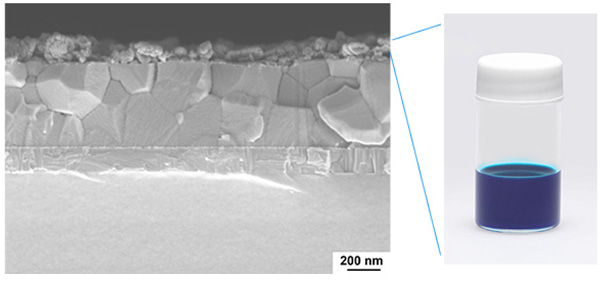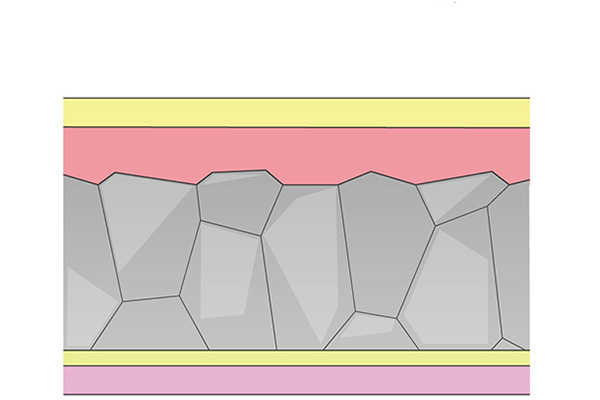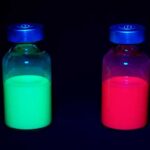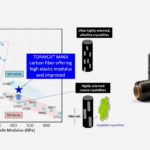ASIA ELECTRONICS INDUSTRYYOUR WINDOW TO SMART MANUFACTURING
Canon to Boost Perovskite Solar Cells with New Material
Canon Inc. has developed a high-performance material that will improve the durability and mass-production stability of perovskite solar cells. The company will further develop the technology and aims to initiate mass production in 2025.

Right: Structure of perovskite solar cell layered with newly developed high-performance material
Solar cells find broad usage as an effective means of realizing a decarbonized society. Today, silicon solar cells are dominantly used in many solar panels for homes and businesses. However, since glass is used as a substrate, these panels can only be installed in places that are sturdy enough to withstand their weight. However, this has been an issue so far.
By comparison, perovskite solar cells are lightweight, bendable, and can generate electricity even from indoor lighting. Thereby, it offers a greater degree of freedom in installation than silicon solar cells.
Additionally, they do not require extensive equipment to manufacture, thus reducing capital investment costs. For these reasons, they are attracting attention as the next generation of solar cells.
Challenges in the Practical Application
At the same time, however, there are several issues standing in the way of practical application. For one, the crystal structure of the perovskite layer (photoelectric conversion layer) is susceptible to the effects of water, heat, oxygen, etc. in the atmosphere, which results in low durability. Furthermore, it is difficult to achieve stable mass production when manufacturing perovskite solar cells with a large surface area.
It has been recognized that a structure covering the perovskite layer is needed to solve these problems.
Functional Material for Coating
Therefore, Canon developed a special functional material to coat the perovskite layer. In the process, it applied the material technology it cultivated through the development of photosensitive members, a key component of multifunction office devices and laser printers.
Key Characteristics of New Material
The key characteristic of this material is its ability to cover the perovskite layer thickly while maintaining a high rate of photoelectric conversion efficiency, which has been difficult with conventional materials. The material can be coated at a thickness of 100 to 200nm. Meanwhile, the conventional coating layer is several tens of nanometers.
Through joint research with Professor Dr. Tsutomu Miyasaka, inventor of the perovskite solar cell and faculty member at Toin University of Yokohama, a performance evaluation was conducted. As a result, it has verified the potential to improve the durability of perovskite solar cells and showed promise in advancing the stability of mass production. Thus, solving these hurdles will help contribute to more widespread use.
“By adding a layer of this newly developed high-performance material to the layer structure of these cells, we can expect to solve the issue of mass production,” said Professor Miyasaka.
Canon will begin shipping samples of this material in June 2024. Successively, it aims to collaborate with companies engaged in the mass production of perovskite solar cells. Going forward, the company will work on further technological development and intends to start mass production in 2025.
Canon will create new value through the power of technology and innovation, while also contributing to solutions for the problems our society faces.
Overview of the Newly Developed Material
When the perovskite layer is covered with the material developed by Canon, the coating suppresses the loss of substance in the crystal structure. This helps to improve the durability of perovskite solar cells. The newly developed material has the property of a semiconductor. Thus, a high rate of photoelectric conversion efficiency is maintained even if the perovskite layer is thickly coated, which is expected to improve mass-production stability.


*HTL and electrode not yet applied
Right: The newly developed high-performance material


Publication of papers on the material
A paper, co-authored by Toin University of Yokohama and Canon, summarizing the research results of this material was published in the Journal of Materials Chemistry A, a peer-reviewed international journal issued by the Royal Society of Chemistry in the U.K. under the following title: “Phthalocyanine-Based Polycrystalline Interlayer Simultaneously Realizing Charge Collection and Ion Defect Passivation for Perovskite Solar Cells”
Link to publication: https://pubs.rsc.org/en/content/articlelanding/2024/ta/d4ta02491e
-20 June 2024-




